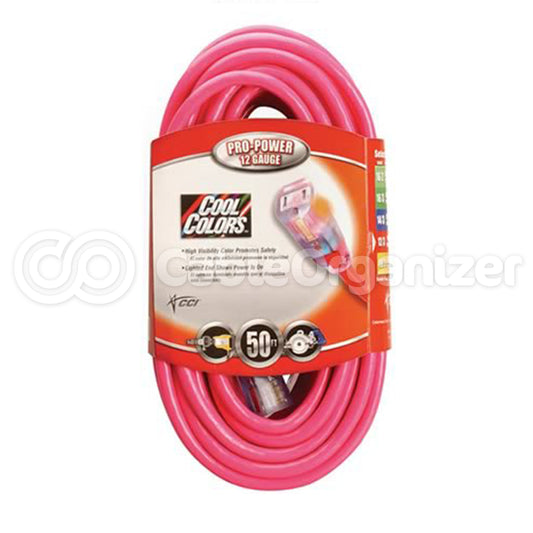Holiday Safety Tips: Preventing Fire and Electrical Hazards
By: CableOrganizer®

It’s the holidays, folks, that most wonderful time of the year when 32 million families across the United States resurrect ornaments, twinkle lights and motorized Santas from garages and basements, then get ready to tackle that favorite December pastime: decorating.
While holiday decorating is all about adding fun, sparkle and warmth to a very special season, it’s important to remember that many of our favorite decorations carry the risk of fire or electrical injury if not used carefully. Don’t let a preventable accident take the enjoyment out of your holidays. Whether you’re excitedly preparing for Christmas, Hanukkah or Kwanzaa, take a few minutes to read our decorating safety tips. From everyone at CableOrganizer®, have a happy, healthy and safe holiday season.
LIGHTS & DECORATIONS
- When shopping for lights, electric decorations and extension cords, purchase only the ones that are UL-listed.
- If you’re planning to decorate outdoors, make sure that you use lights and decorations that are rated for outdoor use. Putting indoor-only products outside in the weather can result in electric shock and fire hazards.
- Cable cover protection like cord covers can also protect holiday light cables outdoors.
- If you’re in doubt as to whether light strings are rated for indoor or outdoor use, just check the UL mark on the product’s package.
- Whether they’re brand-new out of the box or seasoned veterans from holidays past, before you put them up, inspect all lights, electric decorations and extension cords for signs of damage to wire insulation, plugs and bulbs. If the damage can be repaired (such as replacing broken bulbs), do not use the item until the repair has been made. If cords and plugs are damaged, discard and replace the decoration.
- Always unplug lights before changing bulbs, replacing fuses or making any other repairs.
- If you need to replace a bulb in a string of Christmas lights, make sure that the wattage rating of the replacement bulb you’re using matches that of the light strand. Using a bulb with a wattage that is too high can cause the light string to overheat, creating a fire risk.
- When hanging Christmas lights outdoors, reduce your risk of electric shock by passing up metal ladders in favor of ladders made of non-conductive materials like wood or fiberglass-reinforced plastic.
- Only use lights and decorations in accordance with manufacturers’ instructions.
- Before you begin decorating, verify how many strands of lights it is safe to connect end-to-end (That number is three, as a general rule).
- Be careful not to overload extension cords. Before you start plugging them in, find out the wattage rating of your extension cord, as well as the power requirements of any lights or decorations you’re planning to plug into it. A wattage rating is the amount of electricity that an extension cord is built to carry. If the combined power requirements (or “pull”) of your lights and decorations exceed that rating, overheating and fire may occur.
- Every so often, check Christmas light wires to make sure that they’re not warm to the touch.
- Always turn off all Christmas lights and decorations before going to bed or leaving the house.
BUYING A CHRISTMAS TREE

Did you know that your choice of Christmas tree could affect its flammability factor? Older, dried-out trees ignite and burn much faster than those that are freshly cut and well hydrated, so when you’re shopping for a natural (live) Christmas tree, keep the following things in mind:
- Before taking a Christmas tree home, make sure that its needles are fresh, green and firmly attached to the branches. Bend the needles between your fingers — if they break, the tree is too dry. Check that the tree trunk’s cut surface is also sticky to the touch. As a final precaution, pick the tree up vertically and tap the trunk against the ground; if needles fall off, move on to another tree.
- As a rule of thumb, Christmas trees with thicker needles take longer to dry out, so a robust variety like the Noble Fir is a good choice.
- If you opt for an artificial tree instead, be sure that it’s flame retardant.
SETTING UP YOUR CHRISTMAS TREE
The way you set up and care for your tree has a big effect on how long it will last, how beautiful it will stay; and, ultimately, how safe it will be to have in your home.
- Before putting your new Christmas tree into its stand, cut a couple of inches off the bottom of the trunk to expose fresher (and more absorbent) wood. Taking a few minutes to do this will improve your tree’s water intake; and make it harder for your tree to catch fire.
- Your tree stand should have a capacity of at least one gallon, which is the amount of water that the average 6-foot Christmas tree can consume in a day’s time. Generally, live Christmas trees require one quart of water for every inch of trunk diameter.
- Water live Christmas trees daily.
- Position the tree a minimum of three feet away from candles, fireplaces, space heaters, radiators, heat vents and other heat sources.
- Nearly half of all Christmas tree fires involve electrical malfunctions. It is extremely important to check that light strands and other electrical decorations are in good condition (free from insulation cracks, fraying wires or damaged bulbs and plugs) before decorating your tree with them.
For more resources on how to safely decorate your home for the holidays, be sure to check out the National Fire Protection Agency’s (NFPA) guide to Winter/Holiday Safety, as well as Holiday Fire Safety suggestions from the U.S. Fire Administration (USFA).
Shop at CableOrganizer® for more holiday cable management products, including Flexo® PET expandable braided sleeving in the “holiday” pattern to protect and cover your wires in festive red, gold and green.


